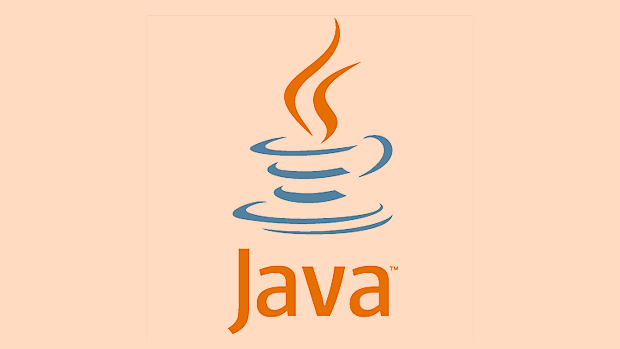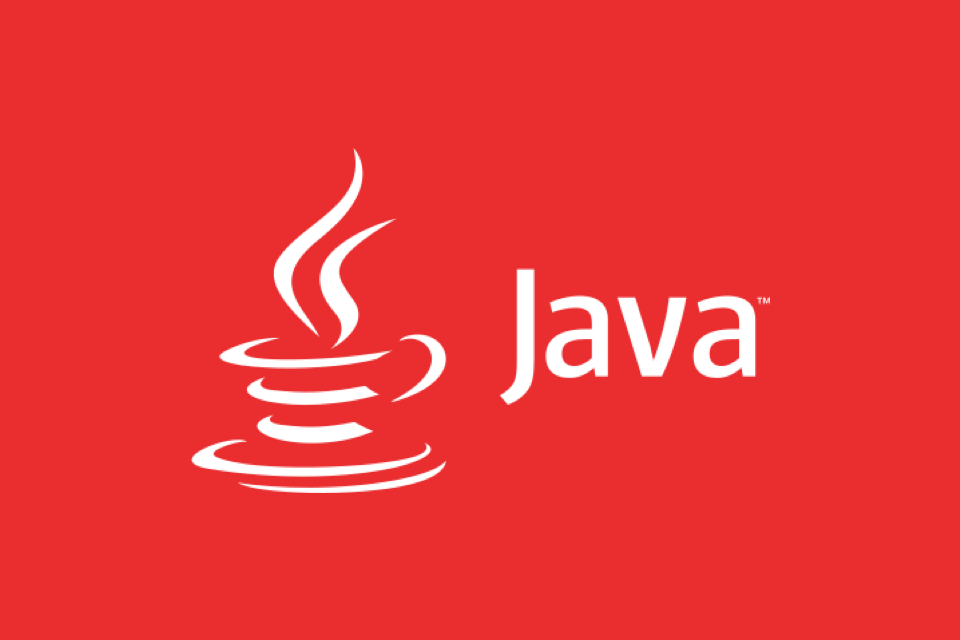Java is a practical choice for data science in enterprise and large-scale environments. 1. Apache Commons Math provides mathematical and statistical tools for custom algorithms. 2. Weka offers a comprehensive suite of ML algorithms and GUI tools, ideal for prototyping. 3. DL4J enables deep learning with support for neural networks and integration with Hadoop and Spark. 4. Apache Spark with Java API supports large-scale data processing, MLlib, and real-time analytics. 5. Smile delivers high-performance machine learning with a clean API and broad functionality. 6. Tablesaw facilitates data wrangling and preprocessing similar to Python’s pandas. Java excels in enterprise integration, real-time systems, big data pipelines, and Android/edge ML. Despite a smaller community and less cutting-edge research support, Java’s performance, scalability, and JVM compatibility make it a strong option when integrated into existing Java ecosystems.

Java isn’t the first language that comes to mind when people think of data science—Python often dominates that space. But Java, with its performance, scalability, and robust ecosystem, is a strong contender, especially in enterprise environments. If you're working with large-scale systems, real-time processing, or integrating data pipelines into existing Java-based infrastructure, Java makes a lot of sense.

Here’s a breakdown of key Java libraries for data science and common use cases where Java shines.
Key Java Libraries for Data Science
1. Apache Commons Math
This is Java’s go-to library for mathematical and statistical operations.

- Provides tools for linear algebra, probability distributions, regression, clustering, and more.
- Great for implementing custom algorithms without relying on external systems.
- Lightweight and integrates easily into any Java project.
Example use: Building a custom anomaly detection model using statistical hypothesis testing.
2. Weka
One of the most mature machine learning libraries in Java.

- Offers a full suite of ML algorithms: classification, regression, clustering, association rules.
- Includes GUI tools for data exploration and model training.
- Ideal for prototyping and educational purposes.
Note: Weka works best with in-memory datasets, so it’s less suited for big data but perfect for medium-sized problems.
3. DL4J (DeepLearning4J)
A powerful deep learning library designed for Java and Scala.
- Supports neural networks, CNNs, RNNs, and reinforcement learning.
- Integrates with Hadoop and Spark for distributed training.
- Enterprise-friendly: no reliance on Python, runs on the JVM.
Use case: Natural language processing in a financial services app where model explainability and integration with existing Java backends are critical.
4. Apache Spark (with Java API)
While Scala is Spark’s native language, Java has solid support.
- Enables large-scale data processing, ML (via MLlib), and stream analytics.
- Ideal for ETL pipelines, real-time fraud detection, or log analysis.
- Leverages in-memory computing for speed.
Tip: Use Java if your team is more comfortable with it than Scala, though the API is a bit more verbose.
5. Smile (Statistical Machine Intelligence and Learning Engine)
A modern, high-performance library for ML and data analysis.
- Faster than Weka in many benchmarks.
- Supports classification, regression, clustering, NLP, and visualization.
- Clean API and good documentation.
Best for: High-performance ML tasks where you want to avoid the overhead of Python-JVM bridges.
6. Tablesaw
Java’s answer to pandas.
- For data wrangling: loading, cleaning, filtering, and exploring data.
- Can read CSV, Excel, and databases directly.
- Built-in plotting and descriptive statistics.
Great for: Preprocessing data before feeding it into a model or generating quick reports.
When to Use Java in Data Science
1. Enterprise Integration
If your organization runs on Java-based systems (Spring, Hibernate, etc.), building data science components in Java avoids integration headaches.
- Models can be packaged as microservices.
- Easier to deploy alongside existing apps without containerizing Python services.
2. High-Performance, Low-Latency Systems
Java’s performance and garbage collection tuning make it ideal for real-time scoring or streaming analytics.
- Fraud detection in payment systems.
- Real-time recommendation engines.
3. Big Data Pipelines
With Hadoop and Spark, Java is deeply embedded in big data ecosystems.
- Writing custom Spark jobs in Java for data transformation.
- Processing terabytes of logs or sensor data.
4. Android and Edge ML
Want on-device ML in an Android app? Java or Kotlin with DL4J lets you run models without depending on external Python servers.
Limitations to Consider
- Smaller community than Python in data science—fewer tutorials and third-party tools.
- Less support for cutting-edge research—new models often appear in Python first.
- Verbose syntax—more code to write for the same task compared to Python.
But these are trade-offs, not dealbreakers—especially if you value stability, performance, and integration.
Bottom Line
Java may not be the flashiest choice for data science, but it’s a practical one in the right context. For enterprise applications, large-scale data processing, or systems where JVM compatibility matters, Java’s ecosystem—Weka, DL4J, Spark, Smile, Tablesaw—provides solid tools.
You don’t need to switch languages to do real data science work. If you're already in the Java world, leverage it. With the right libraries, Java can handle everything from data cleaning to deep learning—efficiently and at scale.
Basically, if your data pipeline runs on servers that speak Java, it makes sense for your models to speak it too.
The above is the detailed content of Java for Data Science: Libraries and Use Cases. For more information, please follow other related articles on the PHP Chinese website!

Hot AI Tools

Undress AI Tool
Undress images for free

Undresser.AI Undress
AI-powered app for creating realistic nude photos

AI Clothes Remover
Online AI tool for removing clothes from photos.

Clothoff.io
AI clothes remover

Video Face Swap
Swap faces in any video effortlessly with our completely free AI face swap tool!

Hot Article

Hot Tools

Notepad++7.3.1
Easy-to-use and free code editor

SublimeText3 Chinese version
Chinese version, very easy to use

Zend Studio 13.0.1
Powerful PHP integrated development environment

Dreamweaver CS6
Visual web development tools

SublimeText3 Mac version
God-level code editing software (SublimeText3)

Hot Topics
 Differences Between Callable and Runnable in Java
Jul 04, 2025 am 02:50 AM
Differences Between Callable and Runnable in Java
Jul 04, 2025 am 02:50 AM
There are three main differences between Callable and Runnable in Java. First, the callable method can return the result, suitable for tasks that need to return values, such as Callable; while the run() method of Runnable has no return value, suitable for tasks that do not need to return, such as logging. Second, Callable allows to throw checked exceptions to facilitate error transmission; while Runnable must handle exceptions internally. Third, Runnable can be directly passed to Thread or ExecutorService, while Callable can only be submitted to ExecutorService and returns the Future object to
 Asynchronous Programming Techniques in Modern Java
Jul 07, 2025 am 02:24 AM
Asynchronous Programming Techniques in Modern Java
Jul 07, 2025 am 02:24 AM
Java supports asynchronous programming including the use of CompletableFuture, responsive streams (such as ProjectReactor), and virtual threads in Java19. 1.CompletableFuture improves code readability and maintenance through chain calls, and supports task orchestration and exception handling; 2. ProjectReactor provides Mono and Flux types to implement responsive programming, with backpressure mechanism and rich operators; 3. Virtual threads reduce concurrency costs, are suitable for I/O-intensive tasks, and are lighter and easier to expand than traditional platform threads. Each method has applicable scenarios, and appropriate tools should be selected according to your needs and mixed models should be avoided to maintain simplicity
 Understanding Java NIO and Its Advantages
Jul 08, 2025 am 02:55 AM
Understanding Java NIO and Its Advantages
Jul 08, 2025 am 02:55 AM
JavaNIO is a new IOAPI introduced by Java 1.4. 1) is aimed at buffers and channels, 2) contains Buffer, Channel and Selector core components, 3) supports non-blocking mode, and 4) handles concurrent connections more efficiently than traditional IO. Its advantages are reflected in: 1) Non-blocking IO reduces thread overhead, 2) Buffer improves data transmission efficiency, 3) Selector realizes multiplexing, and 4) Memory mapping speeds up file reading and writing. Note when using: 1) The flip/clear operation of the Buffer is easy to be confused, 2) Incomplete data needs to be processed manually without blocking, 3) Selector registration must be canceled in time, 4) NIO is not suitable for all scenarios.
 Best Practices for Using Enums in Java
Jul 07, 2025 am 02:35 AM
Best Practices for Using Enums in Java
Jul 07, 2025 am 02:35 AM
In Java, enums are suitable for representing fixed constant sets. Best practices include: 1. Use enum to represent fixed state or options to improve type safety and readability; 2. Add properties and methods to enums to enhance flexibility, such as defining fields, constructors, helper methods, etc.; 3. Use EnumMap and EnumSet to improve performance and type safety because they are more efficient based on arrays; 4. Avoid abuse of enums, such as dynamic values, frequent changes or complex logic scenarios, which should be replaced by other methods. Correct use of enum can improve code quality and reduce errors, but you need to pay attention to its applicable boundaries.
 How Java ClassLoaders Work Internally
Jul 06, 2025 am 02:53 AM
How Java ClassLoaders Work Internally
Jul 06, 2025 am 02:53 AM
Java's class loading mechanism is implemented through ClassLoader, and its core workflow is divided into three stages: loading, linking and initialization. During the loading phase, ClassLoader dynamically reads the bytecode of the class and creates Class objects; links include verifying the correctness of the class, allocating memory to static variables, and parsing symbol references; initialization performs static code blocks and static variable assignments. Class loading adopts the parent delegation model, and prioritizes the parent class loader to find classes, and try Bootstrap, Extension, and ApplicationClassLoader in turn to ensure that the core class library is safe and avoids duplicate loading. Developers can customize ClassLoader, such as URLClassL
 Exploring Different Synchronization Mechanisms in Java
Jul 04, 2025 am 02:53 AM
Exploring Different Synchronization Mechanisms in Java
Jul 04, 2025 am 02:53 AM
Javaprovidesmultiplesynchronizationtoolsforthreadsafety.1.synchronizedblocksensuremutualexclusionbylockingmethodsorspecificcodesections.2.ReentrantLockoffersadvancedcontrol,includingtryLockandfairnesspolicies.3.Conditionvariablesallowthreadstowaitfor
 Handling Common Java Exceptions Effectively
Jul 05, 2025 am 02:35 AM
Handling Common Java Exceptions Effectively
Jul 05, 2025 am 02:35 AM
The key to Java exception handling is to distinguish between checked and unchecked exceptions and use try-catch, finally and logging reasonably. 1. Checked exceptions such as IOException need to be forced to handle, which is suitable for expected external problems; 2. Unchecked exceptions such as NullPointerException are usually caused by program logic errors and are runtime errors; 3. When catching exceptions, they should be specific and clear to avoid general capture of Exception; 4. It is recommended to use try-with-resources to automatically close resources to reduce manual cleaning of code; 5. In exception handling, detailed information should be recorded in combination with log frameworks to facilitate later
 How does a HashMap work internally in Java?
Jul 15, 2025 am 03:10 AM
How does a HashMap work internally in Java?
Jul 15, 2025 am 03:10 AM
HashMap implements key-value pair storage through hash tables in Java, and its core lies in quickly positioning data locations. 1. First use the hashCode() method of the key to generate a hash value and convert it into an array index through bit operations; 2. Different objects may generate the same hash value, resulting in conflicts. At this time, the node is mounted in the form of a linked list. After JDK8, the linked list is too long (default length 8) and it will be converted to a red and black tree to improve efficiency; 3. When using a custom class as a key, the equals() and hashCode() methods must be rewritten; 4. HashMap dynamically expands capacity. When the number of elements exceeds the capacity and multiplies by the load factor (default 0.75), expand and rehash; 5. HashMap is not thread-safe, and Concu should be used in multithreaded






